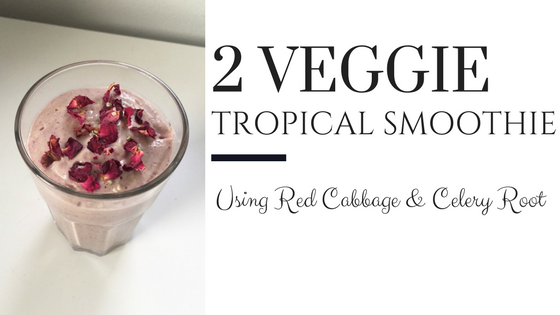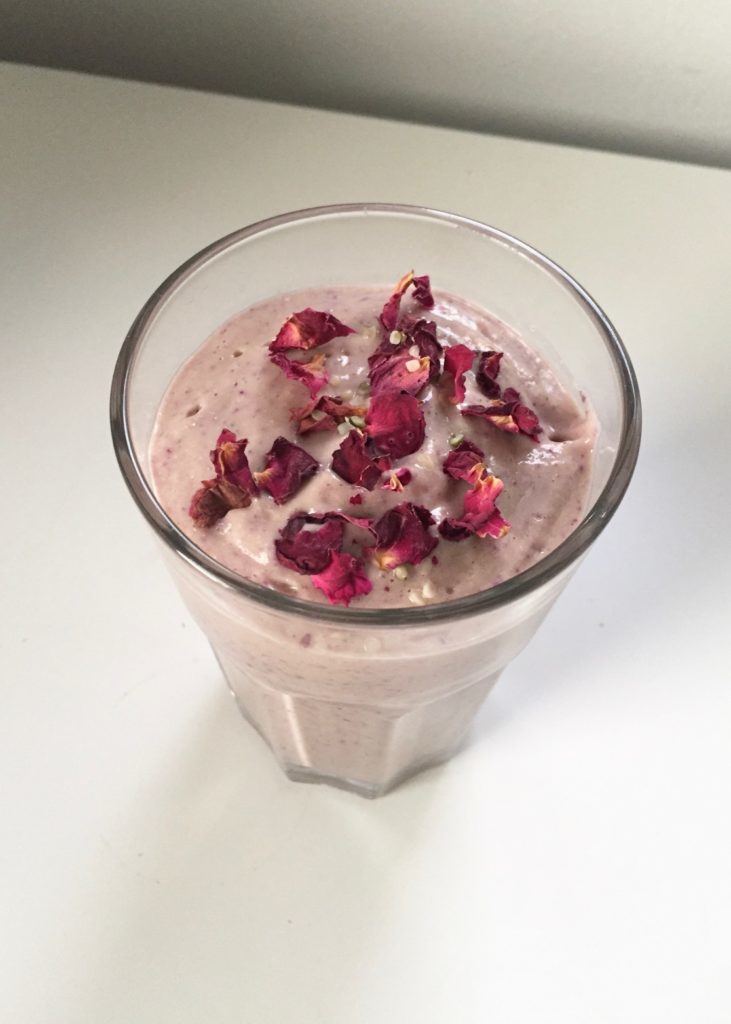
Instagram is the place of millions of pictures and while trolling, I happen to meet a like-minded foodie by the name of Tiffany. Tiffany “It’s Me Lady G” Stuart is the owner and Editor-In-Chief of the lifestyle, beauty, wellness, and mommy blog.
Tiffany is a plant based, internationally published blogger, Huffington Post contributor, YouTuber, public speaker, organizer of several women’s groups in the NYC area, and soon-to-be certified holistic health coach.
Check her out on instagram @itsmeladyg (url link www.instagram.com/itsmeladyg) or on her blog itsmeladyg.com (url link:
www.itsmeladyg.com)
My 2 Veggie Tropical Smoothie (Yup, It’s Got Red Cabbage & Celery Root In It)
Why, oh why would someone want to put any other veggie but greens in a
smoothie?!
Yeah, that’s exactly what I thought when I was blending this baby up.
But, let me back this up a couple steps.
Smoothies are the easiest vehicle for healthy eating all fit neatly in a
glass (in my honest opinion). For many, this is the healthiest drink they
may have all day. So I figured why not amp it up by adding veggies other
than green leafy ones (although they are equally as awesome).
If you have been following me on instagram, you will know that I’ve been
sharing a lot of informational posts on food and wellness. For a while I
was on a complete cruciferous kick trying and posting a lot of veggies
belonging to that family. If you’re thinking “Cruciferi-what?”, don’t
worry let me explain.
Cruciferous veggies are those belonging to the Brassicaceae family and
include broccoli, cauliflower, and green and red cabbage to name a few.
All of these veggies are high on fiber, vitamins, and minerals that we all
need on a daily basis.
In addition, cruciferous veggies have been found to help “encourage active
and healthy estrogen metabolism.” (per Thomas Stearns Lee, NMD in this
website and study) This is especially helpful now being that many of the
products and foods we are eating are leading to xenoestrogens being
released in our body. Xenoestrogens are a group of either naturally or
artificial compounds that act like estrogen in the body. They are a
problem because they unlock hormonal and other reactions in our bodies and
alter natural balance. Too many of these reactions can potentially lead to
an array of problems including cancer.
However, cruciferous veggies have been found to help the body process out
excess estrogen and xenoestrogens in our system. According to a study from
PubMed.gov (the U.S. National Library of Medicine National Institute of
Health), “Epidemiological studies provide evidence that the consumption of
cruciferous vegetables protects against cancer more effectively than the
total intake of fruits and vegetables.”. It goes on to say that during
trials, the compounds in this group of veggies decreased carcinogen
activation by inhibition of phase I enzymes, and slowed tumor growth and
induction of apoptosis” (Apoptosis is programmed cell death. Most if not
all healthy cells are supposed to die at their pre-determined time, though
cancer cells have shown to not die like they should).
So, long story short, eating more cruciferous vegetables is should
benefit the masses. .
Red Cabbage is part of this amazing family of veggies. What makes red
cabbage extra special is what makes it different than it’s green
counterpart…it’s color! That beautiful purple color is from a pigment
called anthocyanin. Anthocyanin has high amounts of antioxidants which can
help fight free radicals in the body,
So, what’s the deal with the celery root?
Celery root is pretty much what it sounds like, the root of a celery
plant, though it is variety that is produced for it’s edible root as
opposed to the celery we find in stores. Celery is a mild vegetable that
can be eaten raw or cooked. I decided to add it to the mix because of it’s
amount of vitamin c and potassium.
Potassium can help people with high blood pressure lower or regulate it by
helping lessen the effects of sodium. According to the American Heart
Association’s website, potassium does this by excreting it through urine.
The thing is our daily potassium intake for an average person is 4700 mg
per day…yeah that’s a lot! And although bananas are recommended, an
average size banana is 422mg meaning you would have to eat about 11 or so
bananas to hit that quota. So, the only other way is to eat other
potassium rich foods.
With about 468 mg in a cup of raw celery root, they can easily help you
move towards that daily amount. And in case you were wondering, other high
potassium foods include winter squash, avocados, bananas, spinach, and
more.
This smoothie is not like any other smoothie because it has a purpose. It
is meant to introduce you to foods that may help lower blood pressure and
provide you with affordable antioxidants on a regular basis.
Let’s get started…
2 Veggie Tropical Smoothie
I wanted to keep this recipe super simple and quick. That is why I used
easy measurement tools such as palmfuls.
For this smoothie, you will need:
1 Palmful of Raw Red Cabbage
3/4 Palmful of celery root (cooked or preferably raw)
1 Palmful of chopped frozen pineapple
1 Ripe Banana
3/4 Cup of Almond Milk
1. Throw it all in a blender and mix for 30-45 seconds. Add nut milk or
blend longer if you want it to be smoother or looser.
That’s it!
With the pineapple and banana in the blend you could hardly taste the
veggies. I think it’s a great way to start incorporating other veggies
into your day.
Let me know if you try it by leaving a comment below.


Great read! I’m going to have to try to make that smoothie!
Yummy! I love her IG!
Looks to tasty and easy to make.
In need to try it! Sounds great!!